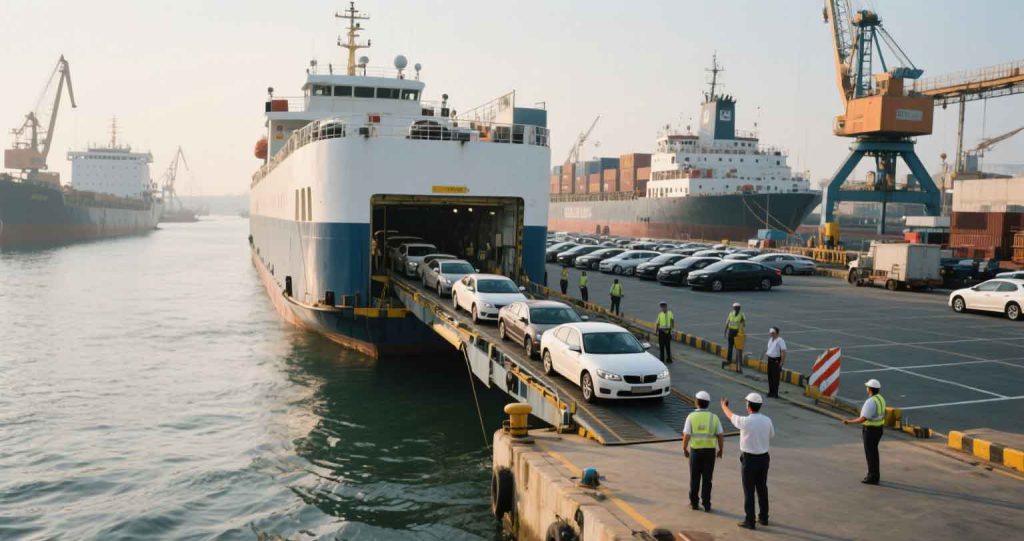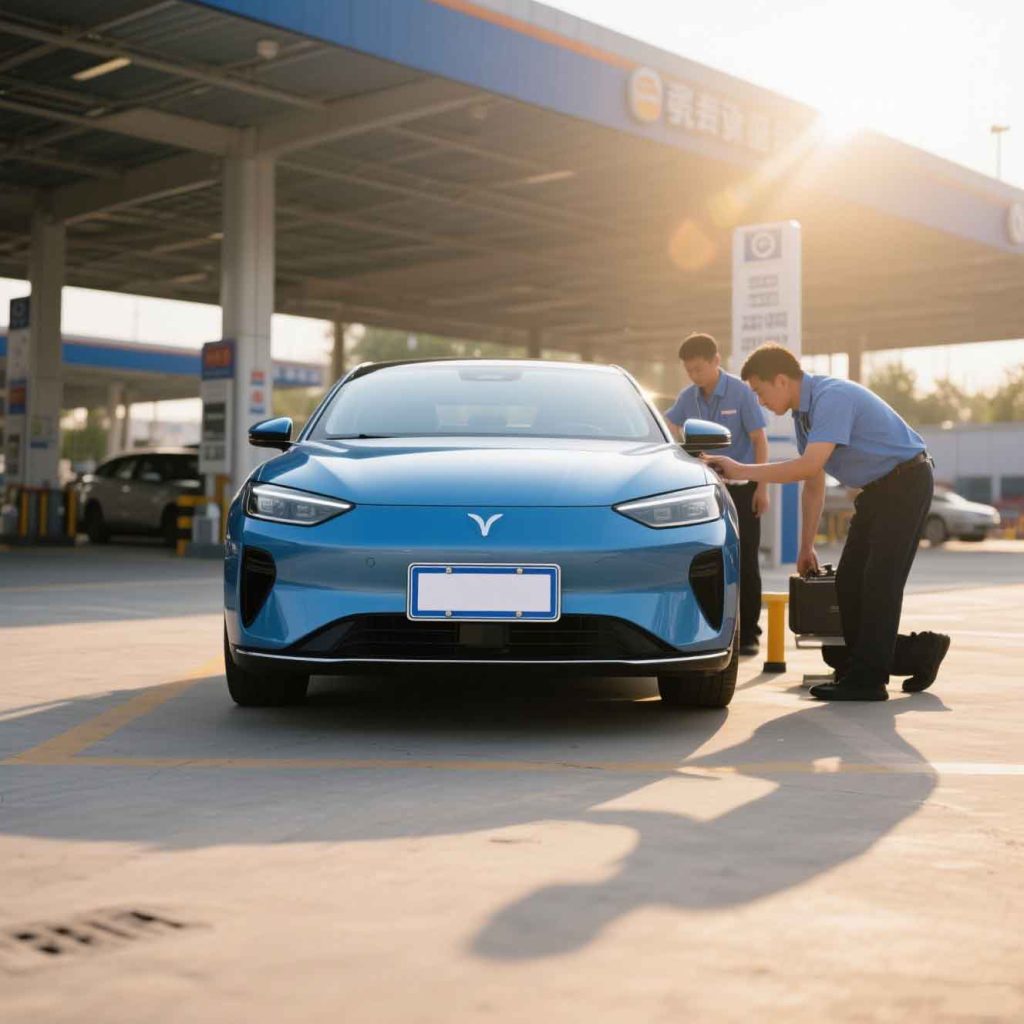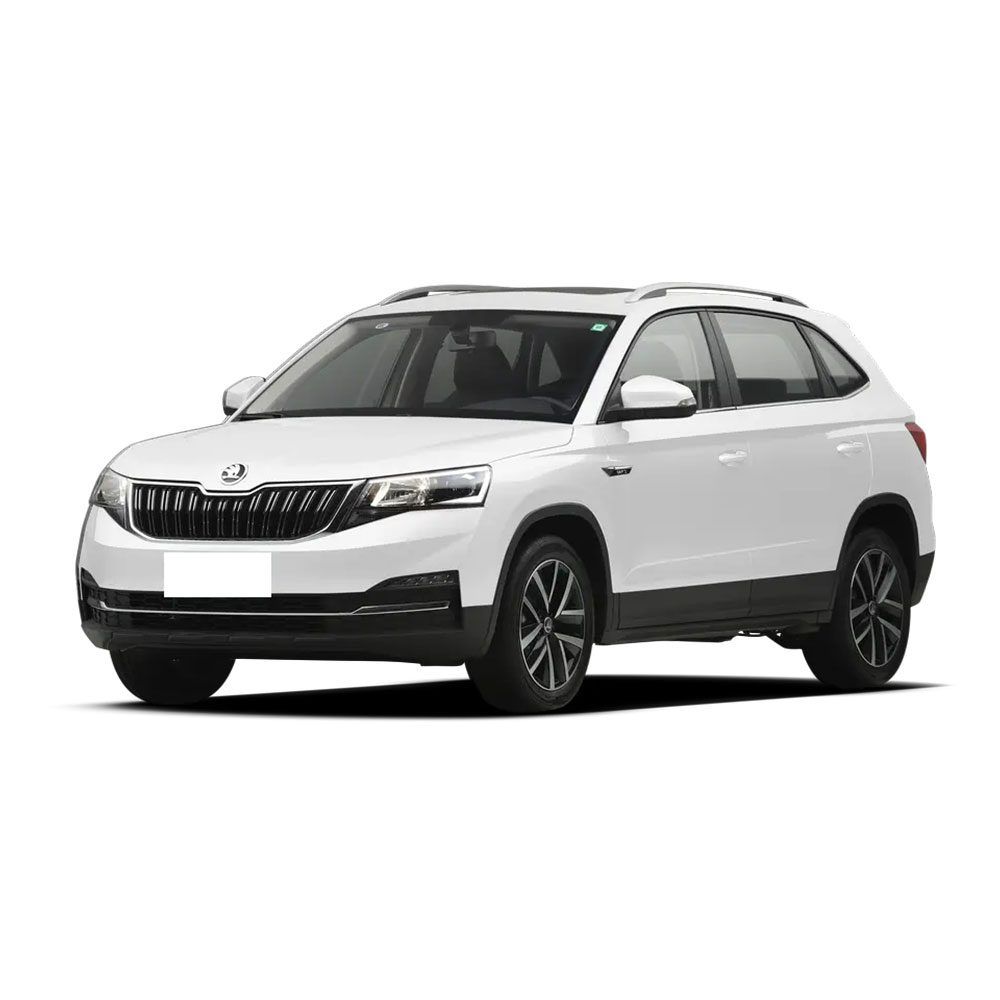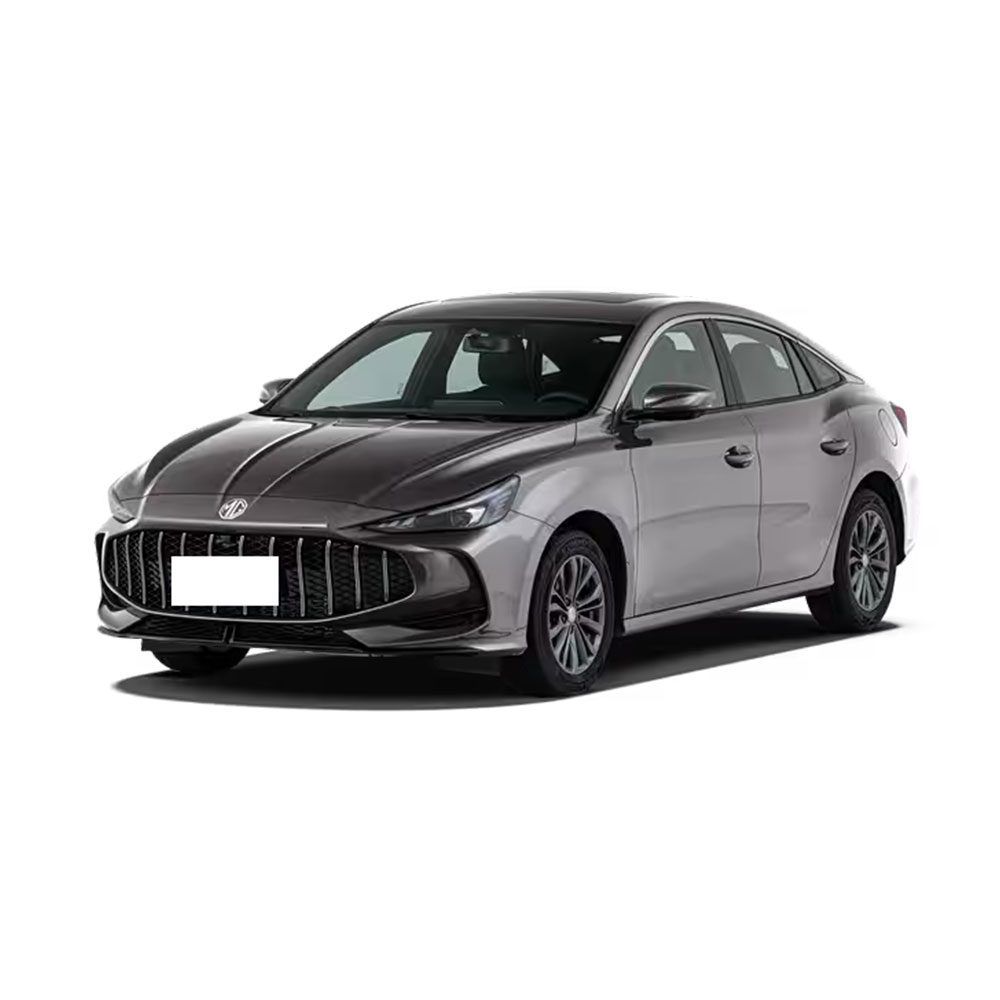How to Import an Electric Car from China in 2025: Step-by-Step Guide
- Why Choose Chinese EVs? Advantages of Chinese EVs
- Detailed Process for Importing EV car from China in 2025
- Feel Free To Contact Us Anytime
In recent years, China’s automotive industry has developed rapidly. Chinese electric vehicles (EV), in particular, have not only captured a significant share of the domestic car market but are also leading the global EV market. Consequently, many global car users are starting to pay attention to Chinese EV car, learn about their export process, and consider importing them from China for personal use.
If you are interested in Chinese EV and have the idea of importing one from China, take a look at the article brought to you by Ahcarsale: “How to Import EV car from China in 2025? A Step-by-Step Guide”. This article details why you should choose Chinese EV car, their advantages over global EVs, the specific process for importing EVs from China, and the required documents.
Why Choose Chinese EVs? Advantages of Chinese EVs
- Chinese EVs feature advanced battery technology and ultra-intelligent driving experiences.
Global Leadership in Core EV Tech (Battery, Motor, Electronic Control):
Blade Battery: Developed by Chinese automaker BYD, the Blade Battery passed the EU’s strictest safety test, ECE R100.03. It solves winter range anxiety with high energy density (≥125Wh/kg), low degradation (cycle life over 3,000 cycles), and low cost advantages.
Hybrid Systems: DM-i technology achieves a pure electric range of 200km+ and a fuel consumption of 2.5L/100km in charge-sustaining mode. It operates closer to pure electric logic than Japanese hybrids, meeting European users’ dual demands for “eco-friendliness + practicality”.
Ultra-Fast Charging Ecosystem: Megawatt-level flash charging technology (replenishing 400 km in 10 minutes) combined with a “Plug & Charge” payment system directly addresses overseas charging anxiety.
Intelligent Experience Outperforms Traditional Automakers:
Chinese EVs come standard with L2+ ADAS, City Navigation on Autopilot (NOA) (e.g., BYD Seal 07 EV popular in Japan), and multi-screen cockpit interaction. European brands like Volkswagen and Mercedes-Benz lag significantly in software-defined vehicles.
OTA update frequency is over 3 times that of European cars. Users can drive feature iteration through community feedback, creating strong brand loyalty.
Unmatched Cost-Effectiveness & Supply Chain Advantages:
- China possesses the world’s most complete new energy supply chain. Battery costs are 40% lower than in Europe/US, making equivalent models 20%-30% cheaper.
Example: The BYD Seagull sells for around €20,000 in Europe, €8,000 cheaper than the VW ID.2, yet offers longer range and richer features.
Flexible Strategies Under Tariff Barriers:
Avoiding High Tariffs: Amid the EU’s 45.3% tariff on Chinese pure EVs, plug-in hybrids (PHEVs), which are not currently subject to the tariff, have seen sales surge by 368% (e.g., BYD’s European sales are over 50% hybrid).
Transshipment Trade: Assembling in ASEAN, Mexico, etc. (e.g., BYD’s Thailand factory) to leverage free trade agreements for “0 tariff” exports to Europe/US.
Detailed Process for Importing EV car from China in 2025
Sign Contract → Obtain Export License / CCC Certification → Ocean Shipping + Dangerous Goods Filing → Port Arrival / Bill of Lading Exchange / Enter Bonded Zone → Submit Documents / Import Registration → Customs Inspection → Pay Taxes & Take Delivery

1. Select Model and Sign Contract with Supplier
First, choose your preferred Chinese EV model. Once decided, sign the relevant contract with the supplier.
Ahcarsale offers a wide range of Chinese EV models. Interested users can visit our product page: Ahcarsale Product >>>
2. Obtain Export License / CCC Certification
- Export Country Requirements (China Side):
CCC Certification: EVs exported from China require Compulsory Product Certification (CCC) to ensure safety standards compliance.
Export License: Some models require an Automatic Import License (processing time: 7-14 working days).
Certificate of Origin: Required for preferential tariffs in the destination country (e.g., near 0% under ASEAN agreements).
- Destination Country Access Requirements:
EU: Requires CE marking. An import registration system (lasting 9 months) started in 2024, potentially allowing retroactive tariffs.
USA: Tariffs up to 100%. Requires FCC certification and battery safety report (UN38.3).
Technical Standards: Pure EVs often need to meet parameters like range ≥200km, battery density ≥125Wh/kg.
3. Shipping & Customs Clearance
- Shipping Arrangements:
Ocean Freight Requirements: As power batteries are Class 9 dangerous goods, provide a UN38.3 test report and maritime filing.
Packaging Specification: Vehicles must be shipped “bare” (without additional packaging) to avoid hindering inspection.
- Destination Port Customs Clearance:
Document Submission: Bill of Lading, Commercial Invoice, Packing List, Certificate of Origin, Vehicle Conformity Certificate, etc.
Import Registration (EU): Must register with customs upon arrival to mitigate retroactive tariff risk (taxes could be levied within 90 days of registration).
Inspection Focus: Verification of VIN, battery status, and emission standards.
4. Tax Costs & Preferential Policies
Core Tax Components:
| Tax Type | Tax Rate | Remarks |
|---|---|---|
| Tariff | 15% (benchmark) | Reaches 102.5% after US additional tariffs |
| Value-Added Tax (VAT) | 13%-25% (varies by country) | EU standard rate is 21% |
| Purchase Tax | Exempt before the end of 2025 | Halved in 2026-2027 (capped at 30,000 yuan) |
5. Overseas Registration & Licensing
The general process for registering and licensing an imported EV car from china:
Clear Customs & Pay Taxes → Technical Inspection → Purchase Compulsory Insurance → Submit Registration Application → Receive License Plate

I. European Union (EU): Strict Certification & Environmental Compliance
- Core Certification Requirements:
CE Marking: Covers safety, EMC, environmental standards. Requires full vehicle test reports.
e-Mark (WVTA): Mandatory Whole Vehicle Type Approval, covering 43 tests (brakes, lights, noise, etc.).
Battery Passport (New 2025): Requires disclosure of battery carbon footprint, recycled material proportion, and supply chain traceability.
- Registration Essential Documents:
Certificate of Conformity (CoC, proving EU standards compliance)
Certificate of Origin (for tariff preferences)
Commercial Invoice, Bill of Lading, CE/e-Mark certificate copies
Insurance Policy & Purchase Contract.
- Specific Process:
1.Clear Customs & Pay Taxes: Pay duty (base ~10% on CIF value) + VAT (~21%).
2.Technical Inspection: By authorized body (e.g., TÜV). Focus: Battery safety (valid UN38.3 report) & VIN consistency.
3.Environmental Registration: Submit CoC and inspection report to traffic authorities for temporary plates (valid 30 days).
4.Final Licensing: Buy compulsory insurance, then exchange temporary plates for permanent ones.
- Common Issues:
Registration may be refused if battery capacity degradation exceeds 20% (provide factory health report).
Nordic countries (e.g., Norway) require winter tires as standard, otherwise retrofitting is needed.
II. North America (US/Canada): Dual Safety & Emission Hurdles
- Core Certification Requirements:
USA: DOT Safety Certification (crash/lights/tires) + EPA Emission Certification (battery efficiency report).
Canada: CMVSS Certification (similar to DOT) + Provincial Registration Permit (e.g., Ontario requires extra EPA testing).
- Registration Essential Documents:
DOT/EPA certification labels (must be affixed to door frame)
US Customs Entry Summary (CBP Form 7501)
Vehicle Identification Number (VIN) Decoding Report
State Environmental Compliance Letter (e.g., CARB for California).
- Specific Process:
1.Port Inspection: Customs may inspect batteries for UL 2580 safety standard compliance (have test docs ready).
2.State Registration: Submit Import Declaration Form HS-7, EPA Form 3520-1 to DMV (Dept. of Motor Vehicles), pay purchase tax (varies by state, 3%~10%).
3.Plate Issuance: After VIN verification, receive plates. Some states (e.g., Texas) require on-site license plate frame installation.
- Risk Warnings:
Some US states (e.g., Florida) ban registration of models not supporting CCS1 charging.
US tariffs may reach 100% in 2025. Consider transshipment via Mexico to avoid.
III. Southeast Asia/Emerging Markets: Flexible Access but Volatile Policies
- Core Certification Requirements:
Thailand: TISI Certification (incl. EMC testing) + Ministry of Transport Vehicle Inspection (battery must meet Thai Industrial Standard 62368).
Indonesia: SNI Certification (focus on battery fire safety standards).
- Process Simplifications:
Tariff Preferences: ASEAN members often have 0~5% tariffs for Chinese EVs (Certificate of Origin required).
Fast Track: Thailand allows manufacturers to pre-register VINs; licensing possible within 3 days of arrival.
- Special Requirements:
Right-hand drive (RHD) countries (Malaysia, Indonesia) require proof of RHD conversion.
High-temperature regions (e.g., Saudi Arabia) require extra battery thermal management test reports.
Additionally, Ahcarsale partners with multiple Chinese automotive brands as one of their suppliers. Contact us, and we will customize a one-on-one export plan for you, making the process faster and simpler. Contact Us>>>





